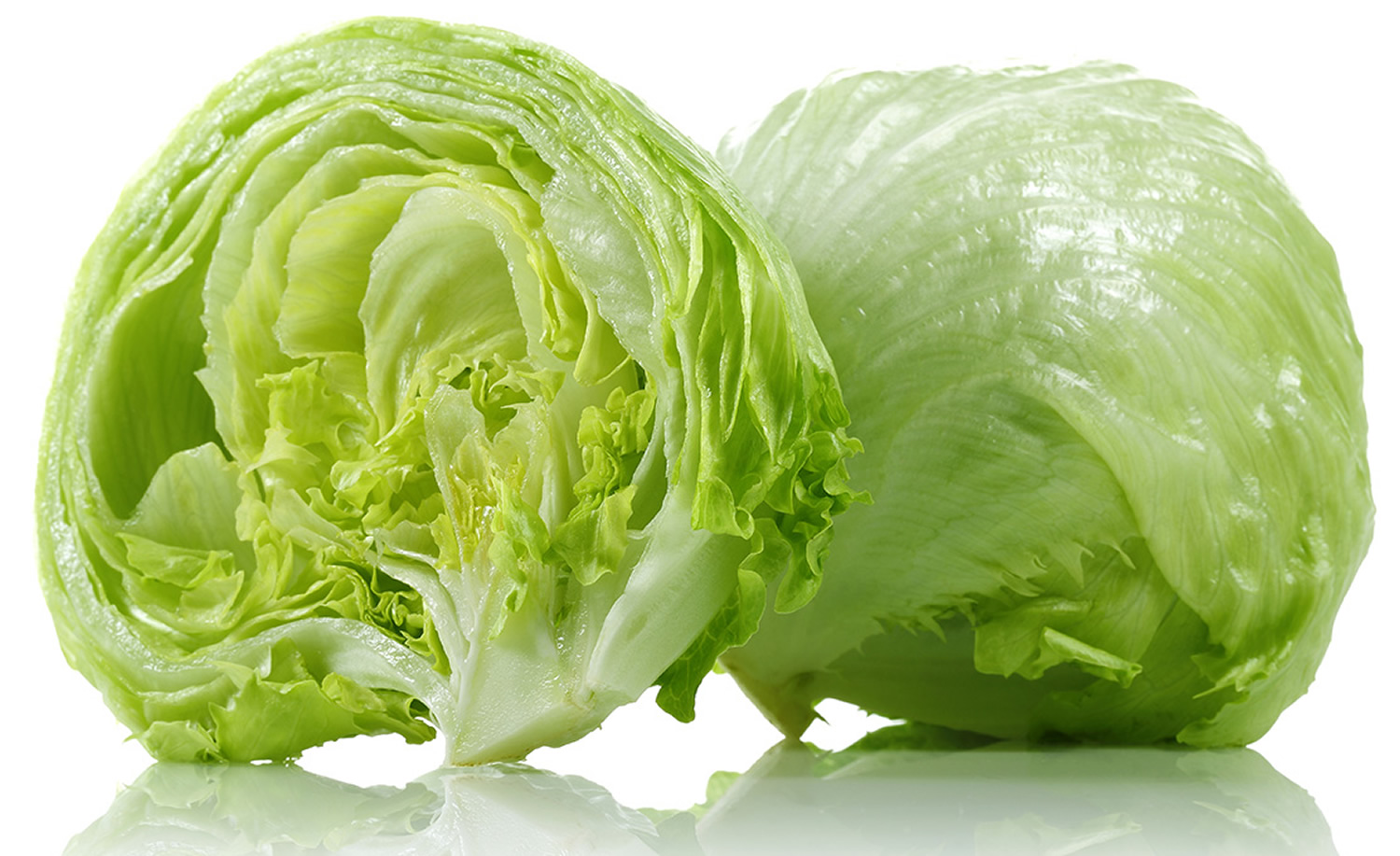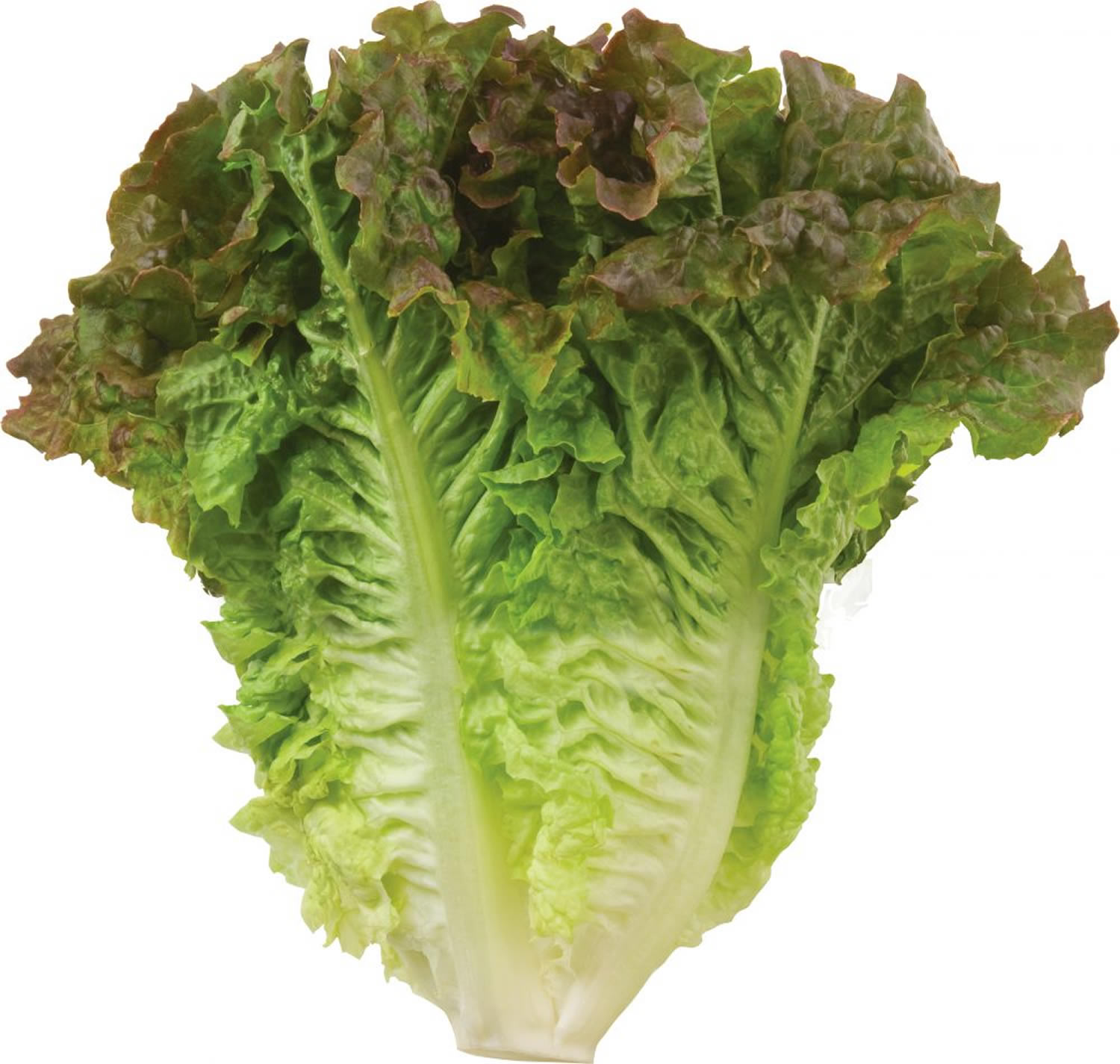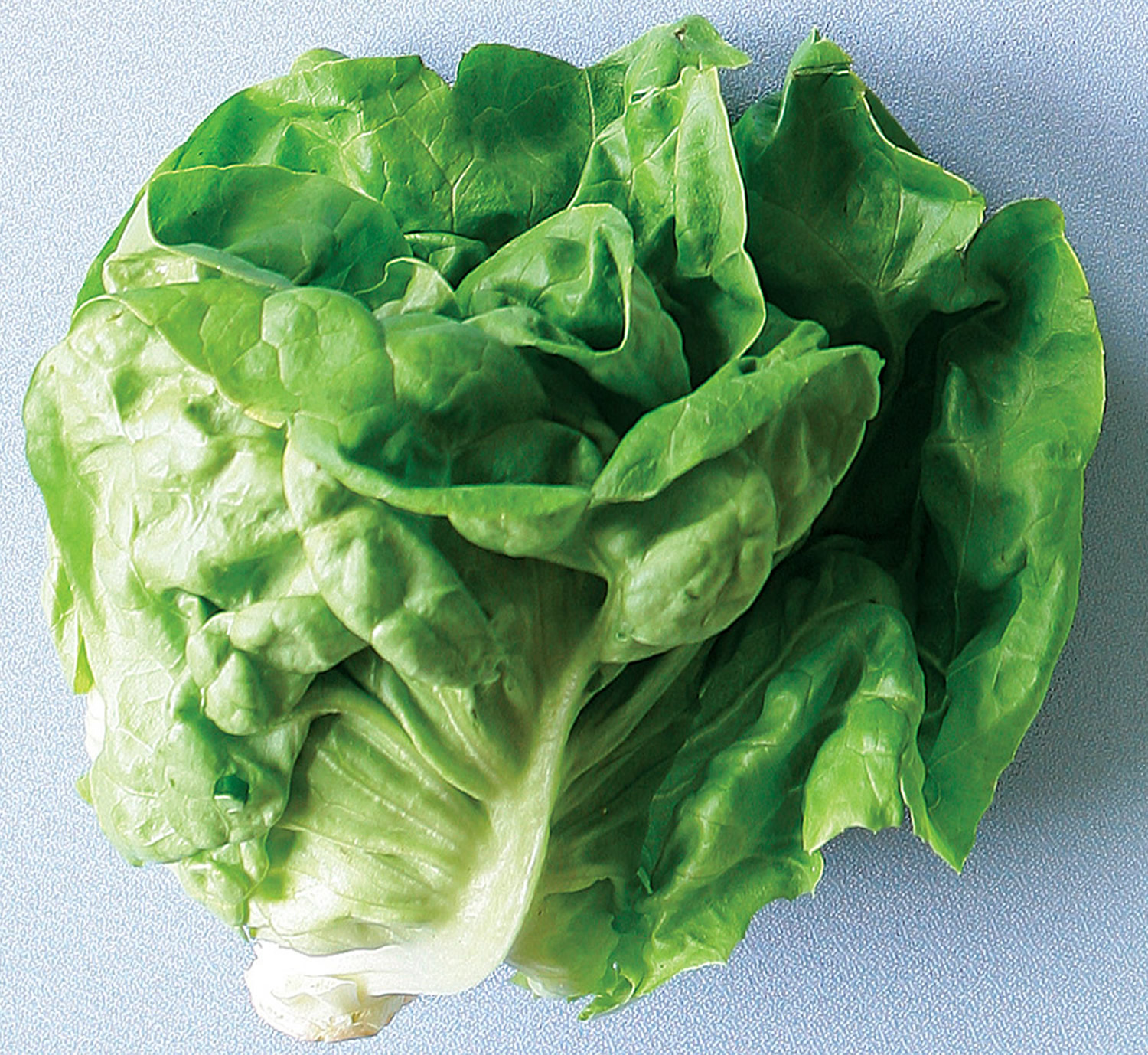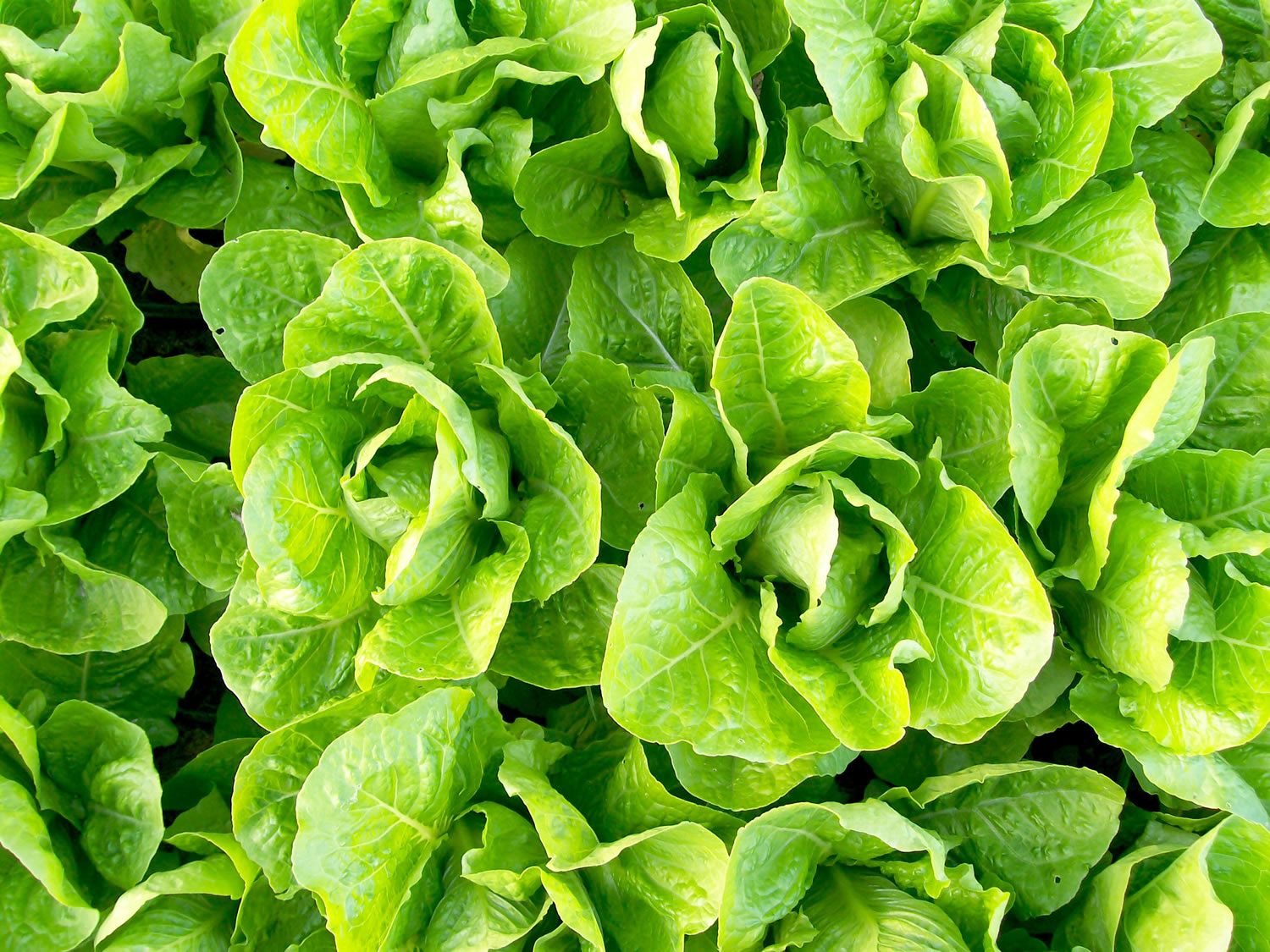Contents
What is lettuce
Lettuce butter head (Lactuca sativa L.) is an annual plant of the daisy family, Asteraceae. Lettuce is most often grown as a leaf vegetable, but sometimes for its stem and seeds. Lettuce is most often used for salads, although it is also seen in other kinds of food, such as soups, sandwiches and wraps; it can also be grilled. Although lettuce is not usually acknowledged as being a rich source of beneficial phytochemicals, it does contain phenolic compounds, vitamins C and E, and carotenoids 1. Lettuce consumption can improve cholesterol metabolism in rats and can stimulate the antioxidant capacity of blood plasma in both humans and rats 2. Beneficial phenolic compounds in lettuce include chicoric acid (also called dicaffeoyltartaric acid), chlorogenic acid (also known as caffeoyl quinic acid) and the flavonoid quercetin 3. Chicoric acid extracted from lettuce inhibits both lipid peroxidation and cyclo-oxygenase enzyme activities 3; chlorogenic acid is effective at inhibiting the hypermethylation of DNA, which is characteristic of tumour cells 4. Finally, quercetin has potential anti-cancer properties, arresting A549 lung cancer cell lines in vitro 5. Despite the effects of these phenolics in isolation, it has been suggested that eating whole foods rich in natural sources of these beneficial compounds is more effective than relying solely on dietary supplements 6, 7.
Types of lettuce
Lettuce varieties are classified into five groups depending on head formation and leaf qualities. There are several types of lettuce, but three (leaf, head and cos or romaine) are the most common. There are seven main cultivar groups of lettuce, each including many varieties:
- Iceberg/Crisphead lettuce – Crisp and hardy (though not as flavorful as other lettuces), iceberg or crisphead lettuce is the most popular type in the US, it is very heat-sensitive and was originally adapted for growth in the northern US. Characterized by a tight firm head of crisp, light green leaves with a white, densely packed heart. This lettuce type is generally intolerant of hot summer conditions, and water or nutritional stress at any time of growth tends to result in premature bolting and poor growth. In summer, some varieties tend to develop slimy internal rotting. Grown for their crisp, sweet, juicy crunch most varieties take about 80 days to develop densely packed heads. It ships well, but is low in flavor and nutritional content, being composed of even more water than other lettuce types. Iceberg lettuce that’s unwashed and stored in a plastic bag in the fridge will keep for up to two weeks — twice as long as most other kinds. Look for firm, densely packed heads that are heavy for their size.
- Leaf lettuce – Also known as looseleaf, cutting or bunching lettuce, this type has loosely bunched leaves. These are the easiest kind of lettuces to grow, and they form no heart or head, as the name indicates. They can be harvested leaf by leaf or by the whole plant. Leaves come in a wide variety of shapes and colors including thick, thin, savoyed, flat, red, green, frilled, cut, curled, wavy, crinkly and so on. There are some extremely frilly and decorative European varieties. The leaves are tender, delicate, and mild flavored, and plants are slow bolting throughout the summer. Varieties tend to mature in 30 – 55 days. It is used mainly for salads.
- Romaine/Cos lettuce – The names for this type of lettuce are derived from its Mediterranean origin and are interchangeable. “Romaine” is a derivation of Roman, while “Cos” comes from Kos, the Greek island. Romaine-type lettuces are 8 – 10 inches tall, upright in form, with long tightly folded leaves that are spoon shaped with thick midribs. Outer leaves are medium-green in color while inner leaves are greenish-white. Outer leaves can be a bit tough, but the ribs are tender and crunchy. Varieties tend to mature in about 75 days. Used mainly for salads and sandwiches, this type forms long, upright heads. This is the most often used lettuce in Caesar salads.
- Butterhead/Boston or Bibb lettuce – Butterhead, Boston or Bibb lettuce is the most popular type of lettuce grown in Europe and one of the finest types. The name comes from the buttery feel and creamy color of the inside leaves. The outer leaves are large and ruffled, often loosely folded, and darker green or brownish in color. Butterhead varieties can be harvested by removing outer leaves or by harvesting the entire head. Butterhead varieties are easier to grow than Crispheads as they are more tolerant of soil and weather conditions. Varieties are also rarely bitter in flavor, are slow bolting, and mature in 55 to 65 days.
- Summer crisp lettuce – Also called Batavian or French crisp, this lettuce is An intermediate between Crisphead and Looseleaf lettuce, this type tends to be a large lettuce. These lettuces tend to be larger, bolt-resistant and well-flavored. Most varieties are resistant to bolting and have good flavor. The outer leaves are thick and crisp and can be harvested as a looseleaf until the head starts to form. The heart is crisp, juicy and sweet with a slight nutty flavor. Varieties tend to mature in about 55 to 60 days.
- Stem lettuce– This type is grown for its seedstalk, rather than its leaves, and is used in Asian cooking, primarily Chinese, as well as stewed and creamed dishes.
- Oilseed lettuce – This type is grown for its seeds, which are pressed to extract an oil mainly used for cooking. It has few leaves, bolts quickly and produces seeds around 50 percent larger than other types of lettuce.
The butterhead and crisphead types are sometimes known together as “cabbage” lettuce, because their heads are shorter, flatter, and more cabbage-like than romaine lettuces.
Figure 1. Iceberg or crisphead lettuce

Figure 2. Leaf or loose leaf or cutting or bunching lettuce

Figure 3. Romaine or Cos lettuce

Figure 4. Butterhead, Boston or Bibb lettuce

Figure 5. Summer crisp or Batavian or French crisp lettuce

Figure 6. Stem lettuce

Lettuce nutrition facts
Depending on the variety, lettuce is an excellent source (20% of the Daily Value, DV, or higher) of vitamin K (97% DV) and vitamin A (21% DV), with higher concentrations of the provitamin A compound, beta-carotene, found in darker green lettuces, such as Romaine. With the exception of the iceberg variety, lettuce is also a good source (10-19% DV) of folate and iron (see Table 1, 2 and 3).
Table 1. Iceberg lettuce nutrition facts
| Nutrient | Unit | Value per 100 g | |||||||||||||||||||
| Approximates | |||||||||||||||||||||
| Water | g | 95.64 | |||||||||||||||||||
| Energy | kcal | 14 | |||||||||||||||||||
| Protein | g | 0.9 | |||||||||||||||||||
| Total lipid (fat) | g | 0.14 | |||||||||||||||||||
| Carbohydrate, by difference | g | 2.97 | |||||||||||||||||||
| Fiber, total dietary | g | 1.2 | |||||||||||||||||||
| Sugars, total | g | 1.97 | |||||||||||||||||||
| Minerals | |||||||||||||||||||||
| Calcium, Ca | mg | 18 | |||||||||||||||||||
| Iron, Fe | mg | 0.41 | |||||||||||||||||||
| Magnesium, Mg | mg | 7 | |||||||||||||||||||
| Phosphorus, P | mg | 20 | |||||||||||||||||||
| Potassium, K | mg | 141 | |||||||||||||||||||
| Sodium, Na | mg | 10 | |||||||||||||||||||
| Zinc, Zn | mg | 0.15 | |||||||||||||||||||
| Vitamins | |||||||||||||||||||||
| Vitamin C, total ascorbic acid | mg | 2.8 | |||||||||||||||||||
| Thiamin | mg | 0.041 | |||||||||||||||||||
| Riboflavin | mg | 0.025 | |||||||||||||||||||
| Niacin | mg | 0.123 | |||||||||||||||||||
| Vitamin B-6 | mg | 0.042 | |||||||||||||||||||
| Folate, DFE | µg | 29 | |||||||||||||||||||
| Vitamin B-12 | µg | 0 | |||||||||||||||||||
| Vitamin A, RAE | µg | 25 | |||||||||||||||||||
| Vitamin A, IU | IU | 502 | |||||||||||||||||||
| Vitamin E (alpha-tocopherol) | mg | 0.18 | |||||||||||||||||||
| Vitamin D (D2 + D3) | µg | 0 | |||||||||||||||||||
| Vitamin D | IU | 0 | |||||||||||||||||||
| Vitamin K (phylloquinone) | µg | 24.1 | |||||||||||||||||||
| Lipids | |||||||||||||||||||||
| Fatty acids, total saturated | g | 0.018 | |||||||||||||||||||
| Fatty acids, total monounsaturated | g | 0.006 | |||||||||||||||||||
| Fatty acids, total polyunsaturated | g | 0.074 | |||||||||||||||||||
| Fatty acids, total trans | g | 0 | |||||||||||||||||||
| Cholesterol | mg | 0 | |||||||||||||||||||
| Other | |||||||||||||||||||||
| Caffeine | mg | 0 | |||||||||||||||||||
Table 2. Romaine (cos) lettuce nutrition facts
| Nutrient | Unit | Value per 100 g | ||||||||||||
| Approximates | ||||||||||||||
| Water | g | 94.61 | ||||||||||||
| Energy | kcal | 17 | ||||||||||||
| Protein | g | 1.23 | ||||||||||||
| Total lipid (fat) | g | 0.3 | ||||||||||||
| Carbohydrate, by difference | g | 3.29 | ||||||||||||
| Fiber, total dietary | g | 2.1 | ||||||||||||
| Sugars, total | g | 1.19 | ||||||||||||
| Minerals | ||||||||||||||
| Calcium, Ca | mg | 33 | ||||||||||||
| Iron, Fe | mg | 0.97 | ||||||||||||
| Magnesium, Mg | mg | 14 | ||||||||||||
| Phosphorus, P | mg | 30 | ||||||||||||
| Potassium, K | mg | 247 | ||||||||||||
| Sodium, Na | mg | 8 | ||||||||||||
| Zinc, Zn | mg | 0.23 | ||||||||||||
| Vitamins | ||||||||||||||
| Vitamin C, total ascorbic acid | mg | 4 | ||||||||||||
| Thiamin | mg | 0.072 | ||||||||||||
| Riboflavin | mg | 0.067 | ||||||||||||
| Niacin | mg | 0.313 | ||||||||||||
| Vitamin B-6 | mg | 0.074 | ||||||||||||
| Folate, DFE | µg | 136 | ||||||||||||
| Vitamin B-12 | µg | 0 | ||||||||||||
| Vitamin A, RAE | µg | 436 | ||||||||||||
| Vitamin A, IU | IU | 8710 | ||||||||||||
| Vitamin E (alpha-tocopherol) | mg | 0.13 | ||||||||||||
| Vitamin D (D2 + D3) | µg | 0 | ||||||||||||
| Vitamin D | IU | 0 | ||||||||||||
| Vitamin K (phylloquinone) | µg | 102.5 | ||||||||||||
| Lipids | ||||||||||||||
| Fatty acids, total saturated | g | 0.039 | ||||||||||||
| Fatty acids, total monounsaturated | g | 0.012 | ||||||||||||
| Fatty acids, total polyunsaturated | g | 0.16 | ||||||||||||
| Fatty acids, total trans | g | 0 | ||||||||||||
| Cholesterol | mg | 0 | ||||||||||||
| Other | ||||||||||||||
| Caffeine | mg | 0 | ||||||||||||
Table 3. Butterhead (includes Boston and Bibb types) lettuce nutrition facts
| Nutrient | Unit | Value per 100 g | ||||||||||||
| Approximates | ||||||||||||||
| Water | g | 95.63 | ||||||||||||
| Energy | kcal | 13 | ||||||||||||
| Protein | g | 1.35 | ||||||||||||
| Total lipid (fat) | g | 0.22 | ||||||||||||
| Carbohydrate, by difference | g | 2.23 | ||||||||||||
| Fiber, total dietary | g | 1.1 | ||||||||||||
| Sugars, total | g | 0.94 | ||||||||||||
| Minerals | ||||||||||||||
| Calcium, Ca | mg | 35 | ||||||||||||
| Iron, Fe | mg | 1.24 | ||||||||||||
| Magnesium, Mg | mg | 13 | ||||||||||||
| Phosphorus, P | mg | 33 | ||||||||||||
| Potassium, K | mg | 238 | ||||||||||||
| Sodium, Na | mg | 5 | ||||||||||||
| Zinc, Zn | mg | 0.2 | ||||||||||||
| Vitamins | ||||||||||||||
| Vitamin C, total ascorbic acid | mg | 3.7 | ||||||||||||
| Thiamin | mg | 0.057 | ||||||||||||
| Riboflavin | mg | 0.062 | ||||||||||||
| Niacin | mg | 0.357 | ||||||||||||
| Vitamin B-6 | mg | 0.082 | ||||||||||||
| Folate, DFE | µg | 73 | ||||||||||||
| Vitamin B-12 | µg | 0 | ||||||||||||
| Vitamin A, RAE | µg | 166 | ||||||||||||
| Vitamin A, IU | IU | 3312 | ||||||||||||
| Vitamin E (alpha-tocopherol) | mg | 0.18 | ||||||||||||
| Vitamin D (D2 + D3) | µg | 0 | ||||||||||||
| Vitamin D | IU | 0 | ||||||||||||
| Vitamin K (phylloquinone) | µg | 102.3 | ||||||||||||
| Lipids | ||||||||||||||
| Fatty acids, total saturated | g | 0.029 | ||||||||||||
| Fatty acids, total monounsaturated | g | 0.008 | ||||||||||||
| Fatty acids, total polyunsaturated | g | 0.117 | ||||||||||||
| Fatty acids, total trans | g | 0 | ||||||||||||
| Cholesterol | mg | 0 | ||||||||||||
| Other | ||||||||||||||
| Caffeine | mg | 0 | ||||||||||||
Cabbage vs Lettuce
Cabbage (Brassica oleracea) is a member of the genus Brassica and the mustard family, Brassicaceae. Several other cruciferous vegetables (sometimes known as cole crops) are considered cultivars of Brassica oleracea, including broccoli, collard greens, Brussels sprouts, kohlrabi and sprouting broccoli. All of these developed from the wild cabbage Brassica oleracea var. oleracea, also called colewort or field cabbage. This original species evolved over thousands of years into those seen today, as selection resulted in cultivars having different characteristics, such as large heads for cabbage, large leaves for kale and thick stems with flower buds for broccoli.
Cabbage is a rich source of vitamin C and vitamin K, containing 44% and 72%, respectively, of the Daily Value (DV) per 100 gram amount (see Table 4 below). Cabbage is also a moderate source (10–19% DV) of vitamin B6 and folate, with no other nutrients having significant content per 100 gram serving.
Basic research on cabbage phytochemicals is ongoing to discern if certain cabbage compounds may affect health or have anti-disease effects. Such compounds include sulforaphane and other glucosinolates which may stimulate the production of detoxifying enzymes during metabolism. Studies suggest that cruciferous vegetables, including cabbage, may have protective effects against colon cancer. Cabbage is a source of indole-3-carbinol, a chemical under basic research for its possible properties.
Figure 7. Cabbage

There are several cultivar groups of cabbage, each including many cultivars 9:
- Savoy – Characterized by crimped or curly leaves, mild flavor and tender texture.
- Spring Greens – Loose-headed, commonly sliced and steamed.
- Green – Light to dark green, slightly pointed heads. This is the most commonly grown cultivar.
- Red – Smooth red leaves, often used for pickling or stewing.
- White, also called Dutch – Smooth, pale green leaves.
Some sources only delineate three cultivars: savoy, red and white, with spring greens and green cabbage being subsumed into the latter.
Table 4. Cabbage (raw) nutrition facts
| Nutrient | Unit | Value per 100 g | |||||||||||||||
| Approximates | |||||||||||||||||
| Water | g | 92.18 | |||||||||||||||
| Energy | kcal | 25 | |||||||||||||||
| Protein | g | 1.28 | |||||||||||||||
| Total lipid (fat) | g | 0.1 | |||||||||||||||
| Carbohydrate, by difference | g | 5.8 | |||||||||||||||
| Fiber, total dietary | g | 2.5 | |||||||||||||||
| Sugars, total | g | 3.2 | |||||||||||||||
| Minerals | |||||||||||||||||
| Calcium, Ca | mg | 40 | |||||||||||||||
| Iron, Fe | mg | 0.47 | |||||||||||||||
| Magnesium, Mg | mg | 12 | |||||||||||||||
| Phosphorus, P | mg | 26 | |||||||||||||||
| Potassium, K | mg | 170 | |||||||||||||||
| Sodium, Na | mg | 18 | |||||||||||||||
| Zinc, Zn | mg | 0.18 | |||||||||||||||
| Vitamins | |||||||||||||||||
| Vitamin C, total ascorbic acid | mg | 36.6 | |||||||||||||||
| Thiamin | mg | 0.061 | |||||||||||||||
| Riboflavin | mg | 0.04 | |||||||||||||||
| Niacin | mg | 0.234 | |||||||||||||||
| Vitamin B-6 | mg | 0.124 | |||||||||||||||
| Folate, DFE | µg | 43 | |||||||||||||||
| Vitamin B-12 | µg | 0 | |||||||||||||||
| Vitamin A, RAE | µg | 5 | |||||||||||||||
| Vitamin A, IU | IU | 98 | |||||||||||||||
| Vitamin E (alpha-tocopherol) | mg | 0.15 | |||||||||||||||
| Vitamin D (D2 + D3) | µg | 0 | |||||||||||||||
| Vitamin D | IU | 0 | |||||||||||||||
| Vitamin K (phylloquinone) | µg | 76 | |||||||||||||||
| Lipids | |||||||||||||||||
| Fatty acids, total saturated | g | 0.034 | |||||||||||||||
| Fatty acids, total monounsaturated | g | 0.017 | |||||||||||||||
| Fatty acids, total polyunsaturated | g | 0.017 | |||||||||||||||
| Fatty acids, total trans | g | 0 | |||||||||||||||
| Cholesterol | mg | 0 | |||||||||||||||
| Other | |||||||||||||||||
| Caffeine | mg | 0 | |||||||||||||||
Lettuce health benefits
Fresh vegetables and fruits are associated with lower risk of cancer and cardiovascular diseases. Epidemiological studies have also demonstrated the relationship between dietary habits and disease risk. As a healthier foods, lettuce is an important leafy vegetable that is consumed fresh or in salads. Lettuce varieties have been investigated and reported to contain phenolic compounds with antioxidant activities 10. Studies have shown the health impacts of lettuce in preventing cardiovascular diseases in rats and humans 11. Anticonvulsant and sedative-hypnotic effects have been mentioned for the leaves of this plant 12. Sayyah et al. repoted that seeds extract had analgesic and anti-inflammatory activity in rats 13. Lettuce methanol extract has high phenolic contents and shows strong radical scavenging activity. It was effective against some Gram negative bacteria (Escherichia coli, Klebsiella pneumoniae, Enterobacter cloacae, Serratia marcescens, Acinetobacter baumannii) and Gram positive bacteria (Bacillus subtilus, Staphylococcus aureus, Enterococcus faecalis, Enterococcus faecium and Corynebacterium spp.). Moreover, methanol and aqueous extracts exhibited antiviral activity against HCMV and Cox-B3 viruses 14. The health-promoting benefits of lettuce have been attributed to the presence of vitamin C, phenolics and fiber 15, 16, 17. Llorach et al. 18 recently identified quercetin and luteolin rhamnosyl-hexosides in lettuce.
- Characterisation of polyphenols and antioxidant properties of five lettuce varieties and escarole. Llorach R, Martínez-Sánchez A, Tomás-Barberán FA, Gil MI, Ferreres F. Food Chem. 2008 Jun 1; 108(3):1028-38.[↩]
- Nicolle C, Cardinault N, Gueux E et al. Health effect of vegetable-based diet: lettuce consumption improves cholesterol metabolism and antioxidant status in the rat. Clin Nutr 2004; 23: 605–614. https://www.ncbi.nlm.nih.gov/pubmed/15297097[↩]
- Mulabagal V, Ngouajio M, Nair A, Zhang Y, Gottumukkala AL, Nair MG. In vitro evaluation of red and green lettuce (Lactuca sativa) for functional food properties. Food Chem 2010; 118: 300–306.[↩][↩]
- Lee WJ, Zhu BT. Inhibition of DNA methylation by caffeic acid and chlorogenic acid, two common catechol-containing coffee polyphenols. Carcinogenesis 2006; 27: 269–277. https://www.ncbi.nlm.nih.gov/pubmed/16081510[↩]
- Lu J, Papp LV, Fang J, Rodriguez-Nieto S, Zhivotovsky B, Holmgren A. Inhibition of mammalian thioredoxin reductase by some flavonoids: implications for myricetin and quercetin anticancer activity. Cancer Res 2006; 66: 4410–4418. http://cancerres.aacrjournals.org/content/66/8/4410.long[↩]
- Møller P, Loft S. Interventions with antioxidants and nutrients in relation to oxidative DNA damage and repair. Mutat Res 2004; 551: 79–89. https://www.ncbi.nlm.nih.gov/pubmed/15225583[↩]
- Altunkaya A, Gökmen V. Effect of various anti-browning agents on phenolic compounds profile of fresh lettuce (L. sativa). Food Chem 2009; 117: 122–126.[↩]
- United States Department of Agriculture Agricultural Research Service. National Nutrient Database for Standard Reference Release 28. https://ndb.nal.usda.gov/ndb/search/list[↩][↩][↩][↩]
- Ingram, Christine (2000). The Cook’s Guide to Vegetables. Hermes House. pp. 64–66. ISBN 978-1-84038-842-8.[↩]
- Llorach R, Martínez-Sánchez A, Tomás-Barberán FA, Gil MI, Ferreres F. Characterisation of polyphenols and antioxidant properties of five lettuce varieties and escarole. Food Chem. 2008;108:1028–1038.[↩]
- Serafini M, Bugianesi R, Salucci M, Azzini E, Raguzzini A, Maiani G. Effect of acute ingestion of fresh and stored lettuce (Lactuca sativa) on plasma total antioxidant capacity and antioxidant levels in human subjects. Br J Nutr. 2002;88:615–623. https://www.ncbi.nlm.nih.gov/pubmed/12493083[↩]
- Chu Y, Sun J, Wu X, Liu RH. Antioxidant and antiproliferative activity of common vegetables. J Agric Food Chem. 2002;50:6910–6916. https://www.ncbi.nlm.nih.gov/pubmed/12405796[↩]
- Sayyah M, Hadidi N, Kamalinejad M. Analgesic and anti-inflammatory activity of Lactuca sativa seed extract in rats. J Ethnopharmacol. 2004;92:325–329. https://www.ncbi.nlm.nih.gov/pubmed/15138019[↩]
- Edziri HL, Smach MA, Ammar S, Mahjoub MA, Mighri Z, Aouni M, et al. et al. Antioxidant, antibacterial, and antiviral effects of Lactuca sativa extracts. Ind Crop Prod. 2011;34:1182–1185.[↩]
- Mulabagal V, Ngouajio M, Nair A, Zhang Y, Gottumukkala AL, Nair MG. In vitro evaluation of red and green lettuce (Lactuca sativa) for functional food properties. Food Chem. 2010;118:300–306.[↩]
- Nicolle C, Cardinault N, Gueux E, Jaffrelo L, Rock E, Mazur A. Health effect of vegetable-based diet: Lettuce consumption improves cholesterol metabolism and antioxidant status in the rat. Clin Nutr. 2004;23:605–614. https://www.ncbi.nlm.nih.gov/pubmed/15297097[↩]
- Zhan L, Hu J, Ai Z, Pang L, Li Y, Zhu M. Light exposure during storage preserving soluble sugar and L-ascorbic acid content of minimally processed romaine lettuce (Lactuca sativa L.var. longifolia) Food Chem. 2013;136:273–278. https://www.ncbi.nlm.nih.gov/pubmed/23017423[↩]
- Llorach R, Martínez-Sánchez A, Tomás-Barberán FA, Gil MI, Ferreres F. Characterisation of polyphenols and antioxidant properties of five lettuce varieties and escarole. Food Chem. 2008;108:1028–1038. https://www.ncbi.nlm.nih.gov/pubmed/26065768[↩]





